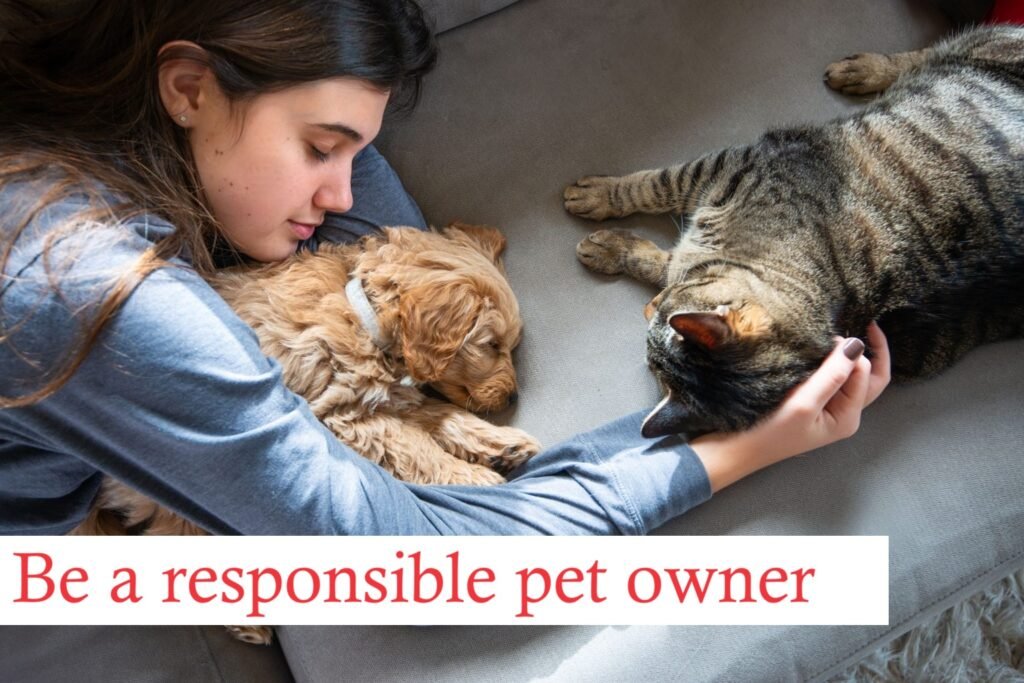As dog owners, we want nothing but the best for our furry friends. One of the most thoughtful investments for their comfort and well-being is a high-quality dog bed. Dog beds offer our canine companions a cosy refuge for rest and sleep, which are critical to their overall health and longevity. They serve as their retreats and are an indispensable part of their daily life.
The right kind of bed is critical in maintaining their joints and bones in optimum condition, apart from providing warmth and safety. It also offers the benefit of keeping hairs, dander’s, and the scent of dogs in one place, which enables easier cleanup.
In this blog post, we will deep dive into features to consider when deciding on a cozy, quality dog bed for your canine companion, and as a guide to becoming informed consumers.
Understanding Your Dog’s Needs
Dogs, much like their human companions, have specific needs that are influenced by factors such as age, breed, size, and health conditions. Therefore, understanding these requirements is paramount when choosing a bed for your furry friend.
Pet age plays a significant role in bed preference. Puppies, for instance, may require smaller beds that offer a sense of safety, while older dogs may thrive with orthopedic beds that provide adequate support for their aging joints. Understanding your dog’s breed also helps you predict their size at maturity, enabling you to pick a bed that can accommodate them in the long run. For example, a bed that might be perfect for a Beagle won’t do for a Saint Bernard.
Similarly, recognizing any existing health conditions your dog may have can influence bed selection. As mentioned earlier, dogs with conditions like arthritis or hip dysplasia may benefit largely from orthopedic beds that offer extra support.
Dogs have unique personalities and sleep habits too. You may have noticed your dog curling up when they sleep, which means a round or oval bed with plenty of cushioning will make them comfortable. On the other hand, dogs that stretch out while sleeping may in turn prefer rectangular or mattress-style beds.
Evaluating the Insulation
Insulation is the defining feature of a warm dog bed. Quality insulation can keep the bed from losing heat, providing your canine pal with a cozy resting place, especially during the colder months.
There are different types of insulation materials used in dog beds and their effectiveness can vary. One popular choice is the “self-warming” or “self-heating” beds that are designed to trap your dog’s body heat and reflect it back to them. This type of bed typically uses a thermal material such as Mylar (the stuff used in survival blankets) in its padding.
Another form of insulation involves using beds filled with natural, synthetic, or a blend of filling that are designed to trap heat. The quality and amount of the fill determine the insulating effectiveness of such beds.
Choosing the right insulation largely depends on your pet’s tolerance to cold. If your furry friend is of a cold-tolerant breed, like a Husky, insulation may not be as crucial as it would be for a short-haired Chihuahua.
The Impact of Quality Fabric
Just as important as the bed’s insulation is the fabric used in its construction. The right fabric should not only offer comfort and warmth but also durability and ease of maintenance.
Polyester is commonly used in dog beds because of its durability and water-resistant properties. It’s also typically more affordable, making it a good option for those on a budget. However, it may not provide as much warmth as other fabrics.
Fleece, on the other hand, is a popular choice for warm dog beds as it retains heat well and is incredibly soft to the touch. It’s not as durable as polyester but is generally easier to wash.
Sherpa is another option and is often used as a lining material for its superior warmth and comfort. This thick fabric mimics the texture of sheep’s wool and provides excellent insulation while remaining breathable. However, frequent washing may cause Sherpa to matte and lose its fluffy texture.
The Significance of Bed Size and Design
Equally important in the construction of a warm dog bed is its size and design. Having a bed that fits your dog’s size enables them to fall into a deep, comfortable sleep and wake up rejuvenated.
As a rule of thumb, your dog’s bed should be large enough for them to be able to lie naturally in all their favourite positions. However, if you’re choosing a bed with heat-retaining properties, be mindful not to pick one too large, to avoid the bed’s temperature dropping in the unused areas.
In terms of design, beds featuring sides or a ‘cave-like’ structure can retain warmth better as they reduce drafts and offer your dog a nest-like area to snuggle into. Enclosed designs or “donut” beds are known for their heat-retaining capacities and are especially suitable for dogs that like to curl up. For large or elderly dogs, consider raised or heated beds that can offer both warmth and therapeutic comfort.
To Mattress or Not to Mattress
When deciding on the best dog bed, one decision dog owners often face is whether to go for a classic cushioned bed or a mattress-type dog bed. Both types come with their own benefits.
A classic cushioned bed offers plenty of padding for dogs to snuggle into, and they usually consist of materials like polyester or foam with a soft cover. These beds can provide excellent warmth, especially if they have high walls to trap heat.
On the other hand, mattress-type beds, due to their thickness, can also keep your pet comfortable and warm as they prevent the cold from the floor from reaching your dog. They usually come in a more rectangular shape and might be a better fit for dogs that prefer to stretch out during their sleep.
Therefore, while both types can offer excellent warmth, the choice between the two should mainly depend on your dog’s preferred sleeping style, their size and age.
Easy Maintenance Matters
When choosing a warm dog bed, don’t forget to consider its maintenance and durability. Easy cleaning and durability are two factors that, while not directly affecting the bed’s warmth, indeed affect its lifespan and your convenience.
Removable and washable covers or even entirely washable beds are a great choice, as dogs can get pretty dirty. Ensuring you can easily clean the bed helps maintain a hygienic and fresh sleeping area for your pet.
Durability is another important aspect to consider. Look for a bed made of robust material that can withstand your dog’s habits, be it scratching, chewing or digging. Examining customer reviews or speaking with sales and customer service representatives can provide further insight into a bed’s durability.
A Question of Sustainability
More and more dog owners are looking for eco-friendly options when it comes to buying supplies for their pets, and dog beds are no exception. When considering sustainability, factors such as materials used, manufacturing processes, and end-of-life disposal all play a part.
Consider beds made from recycled materials or natural fibers to reduce environmental impact. Some manufacturers even use fillings made from recycled plastic bottles.
Always remember, however, that an eco-friendly bed should not compromise your pet’s comfort and warmth.
Affordability and Value for Money
When shopping for the perfect warm dog bed, affordability and value-for-money should be significant deciding factors. While we want the best for our fur babies, it’s also important to make financial sense out of our purchases.
Remember, the most expensive bed is not necessarily the best one for your dog. The trick is finding a product that balances quality, comfort and cost-effectiveness.
Shop around, make comparisons and read reviews before making a purchase. On one hand, cheap beds often mean lesser quality material and insulation, thereby denying your dog the comfort they deserve. On the other hand, you can find affordable options that do not compromise quality if you are patient and do enough market research.
Additional Tips for Keeping Your Dog Warm
While having a warm dog bed is crucial, there are some other ways you can ensure your furry friend stays warm, particularly in the colder winter months.
Investing in a good quality dog coat can offer great comfort for your pet, especially for those short-haired breeds. Heated pet mats are also a great option that can be placed in their favorite spots around the house.
Moreover, maintaining a consistent warm indoor temperature can help to prevent your pup from feeling too cold. Regular warm meals and plenty of physical activity may also assist in maintaining their body temperature.
Conclusion
Buy perfect warm dog bed for your furry friend takes consideration and knowledge. Recognizing your dog’s specific needs along with understanding factors such as insulation, fabric, and design are critical for making an informed choice. Don’t neglect aspects such as sustainability, maintenance, cost and durability. Remember, investing in a quality bed not only provides your canine pal with the comfort and warmth they need, but it can also help ensure their optimum health and happiness.



